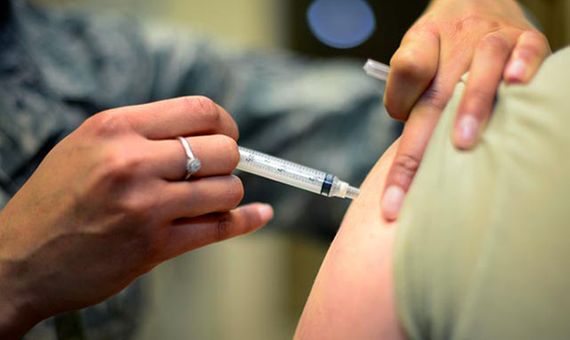If medical science has achieved one resounding success during the twentieth century, it has been the development of vaccines. After reaching a peak with the eradication of the deadly smallpox virus, today new challenges are faced. The latest versions of this therapy (recombinant vaccines) are now being used to combat pathologies for which we still have no cure. To bring an end to the last outbreak of Ebola in the Democratic Republic of the Congo, the administration of a recombinant experimental vaccine was fundamental, and the only vaccine that has shown some efficacy against HIV is precisely that of a recombinant virus. Let’s learn how this treatment helps us fight global threats.

Like traditional vaccines, recombinants teach the body to fight certain infections effectively. However, while traditional vaccines use the pathogen (or a part of it) that causes the disease being fought to activate the immune system, recombinant vaccines are created on demand in the laboratory, generating new microorganisms that don’t produce infection. Juan García Arriaza, a researcher at the National Centre for Biotechnology in Spain, tells OpenMind what the process is like: “Recombinant technology involves introducing into any vector—usually a virus or a bacteria that doesn’t cause disease—regions of the pathogen called antigens, which we know are immunogenic; that is, they have the capacity to activate the immune system.” This technique, in addition to provoking a strong immune response, also avoids some of the pitfalls of vaccine development: “As we are only introducing a fragment of the pathogen, we’ll never be able to cause the disease that we are trying to prevent because people are never being vaccinated with the germ. There’s 100% certainty that you won’t produce the illness,” assures Arriaza.
Development of genetic engineering
From 1796, when the English physician Edward Jenner generated the first vaccine—against smallpox—until the development of genetic engineering in the mid-1970s, it was usual to use the pathogen that caused the disease, either inactive (dead) or in an attenuated (weakened) form. This is really effective against some diseases, but against others it suffers from an important Achilles heel: “Sometimes the attenuation is not enough, and there is a risk that the pathogen will revert to its infectious form; therefore, there is a risk of generating the disease,” Peter Liljeström, director of the research group at the Karolinska Institute in Sweden, explains to OpenMind. Recombinant vaccines avoid this obstacle, unacceptable in the case of diseases such as Zika, Ebola or Chikungunya.

At present, several of the vaccines that are routinely supplied are recombinant. The first human vaccine produced by this method was against hepatitis B, commercialized in 1986, which has proved as effective as its traditional version: more than 95% of healthy people vaccinated are suitably immunized. The last approval of a recombinant vaccine was in 2017, against shingles. The vaccine against the human papillomavirus was released earlier. “Another advantage of these vaccines is that they are fast and easy to build using genetic engineering techniques. Once the antigen of interest has been identified, it’s possible to synthesize the gene that produces it in two days and place it in a vector, and then safely generate large quantities of vaccines,” says Liljeström.
Combined immunological activity
The use of a microorganism other than the pathogen to generate the recombinant vaccine provides a new feature of this treatment. Arriaza explains: “You have the advantage that the vector itself can activate the immune system, and you combine the activation by the antigen with the immunological activity that the vector you are using can cause.” Because of this, and due to their safety, recombinant vaccines are used to fight against diseases for which there is no cure and that until now have resisted the traditional vaccine. “For example, against the human HIV virus, which is being investigated a lot, to this day the only vaccine that has shown some efficacy is that of a recombinant virus expressing the envelope protein of the AIDS virus,” says Arriaza.

A recombinant experimental vaccine was also provided to eradicate the most recent outbreak of Ebola in the Democratic Republic of the Congo, the ninth since the appearance of this disease in 1976. The use of this therapy for the first time at the beginning of an epidemic, which was successfully tested before in the Republic of Guinea, managed to stop the expansion of one of the most feared viruses at present.
One dose against several diseases
The ideal scenario in the world of vaccination would be to find a vector that, with a given immunogen and in a single dose, managed to protect against the illness. “The reality is that, depending on the make up of the disease, sometimes this is achieved and sometimes it doesn’t come with a single immunisation,” says Arriaza. Also on the horizon is the possibility of vaccinating just once against several diseases, since the same vector may contain antigens from different pathogens, which would activate the immune system against different diseases at the same time. Liljeström is clear: “Recombinant vaccines are without doubt the future.”
Comments on this publication